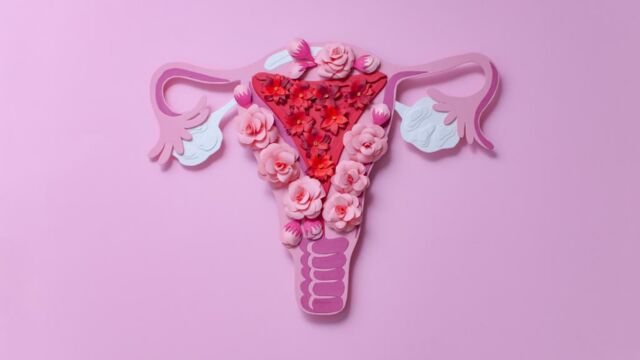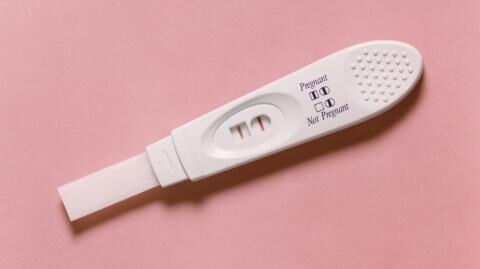‘That time of the month’, ‘aunt flow’, ‘shark week’, no matter what you want to call it, periods are a pain. It’s a time that many of us experience mood swings, cramping, headaches and are at the constant mercy of our blood flow. But, while many of us know the ins and outs of a period, much fewer understand what happens the rest of the month.
Discover our latest podcast
That’s right; your menstrual cycle isn’t just menstruation. It’s much more than that.
What is a menstrual cycle?
Menstrual cycles are essentially a process the body goes through to prepare itself for menstruation or potential pregnancy.
Menstrual cycles occur in most people born with a uterus and generally kicks off between the ages of 10-18. Menstruation will then become a monthly fact of life until the ages of 45-55 where the person then goes through menopause. This meansa person can have up to 500 periods in a lifetime.
The four stages of the menstrual cycle
The menstrual cycle occurs over a 28-day time frame split into four stages - the menstrual phase, the follicular phase, ovulation and the luteal phase. Here’s what you can expect during each step of your menstrual cycle:
Day 1-5 - The Menstrual Phase
Before the menstrual phase, the lining of your uterus will have thickened in preparation to receive a fertilised egg. If your uterus does not accept this fertilised egg, or the egg is not fertilised, then you are not pregnant, and your body no longer needs the uterine lining. Hormonal changes will then cause it to shed.
This marks the first day of your period, and the menstrual phase begins.
During your period, your hormone levels are low, and you can expect to be the victim of both bleeding and associated cramps. This blood consists of a combination of the uterine lining itself as well as a bit of blood caused by blood vessel breakage. The average person will bleed no more than 80mls of blood in this time.
Day 1-13 - The Follicular Phase
The follicular phase also starts on the first day of menstruation and overlaps with the menstrual phase; however, the follicular phase lasts longer until day 14.
During the follicular phase, the pituitary gland releases the follicle-stimulating hormone, causing the ovaries to grow follicles, each containing an egg cell. One of these eggs will then mature over 13 days.
Whilst the egg is reaching maturity, the follicle releases a hormone called progesterone that triggers the development of the uterine wall, otherwise known as the endometrium.
Emotionally, this is when you tend to feel at your best and expect to be feeling happy and energetic.
Day 14 - Ovulation
On the 14th day, oestrogen levels reach their peak, and the pituitary gland releases a hormone known as the luteinising hormone, which signals for the egg cell to be moved into the fallopian tubes.
During ovulation, some people may experience a range of changes, including:
- Mittelschmerz: this is an ovulation pain that causes some cramping on one side of the abdomen.
- An increase in vaginal discharge (often clear or resembling egg whites).
- Breast tenderness.
- Spotting
- Increased sex drive
While ovulation generally occurs on the 14th day of the menstrual cycle, not everyone experiences a 28-day cycle; therefore, the timing of ovulation may vary from person to person. Some people might even ovulate up to two or three times in a menstrual cycle or release more than one egg, and some miss ovulation altogether.
Day 15-28 - The Luteal Phase
The luteal phase starts on the 15th day and extends until the end of the cycle. During this time, the egg cell released into the fallopian tube generally has 12-24 hours to become fertilised by sperm. If sperm does not fertilise the egg cell in this time, then it will begin to degenerate. Progesterone levels that cause the uterus to retain its endometrium will also become used up, and the menstrual process will start again.
While the luteal phase gives the egg just a limited number of hours to become fertilised, sperm can live in the body for up to five days. This means having unprotected sex leading up to this time can still result in pregnancy. If the egg does become fertilised, then a process of cell division will occur, and the egg will divide into two cells, then four, then eight, and so on, until it evolves into a cluster of 100 cells called a blastocyst. This blastocyst then needs to successfully implant in the uterus for the person to fall pregnant.
If pregnancy does occur, the uterus will continue to produce oestrogen and progesterone, and the uterine lining will not shed.
The luteal phase also comes with some not-so-fun symptoms, including the breast tenderness, mood swings and fluid retention we all know as PMS.
When to seek medical assistance
Some people do not experience regular menstruation or ovulation or even very short menstrual cycles. This can be caused by a number of lifestyle factors including diet and stress, but it can also be a symptom of an underlying health condition such as endometriosis or polycystic ovarian syndrome.
If you are concerned about the regularity of your menstrual cycle or are looking to get pregnant, it is generally a good idea to seek the help of a GP or gynaecologist.















